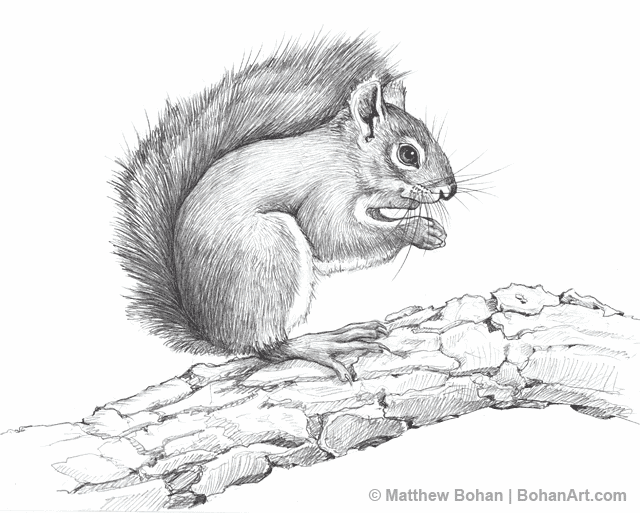
My mother has a real love of nature and animals. She was not one to frivolously shop. However, once when I was a teenager she came home with a something unusual. She opened up a box and showed us her “Find,” which was a life-sized, cast metal Grey Squirrel. It was painted quite realistically and was posed as if it were climbing up a tree. Around our kitchen were a handful of other animal sculptures, mostly small, cute or comical things like a rabbit dressed up as a professional boxer, and another of a rabbit skiing, but this didn’t fit with the rest of the small collection. First of all this was a RODENT, not a lagomorph. Rabbits make for good kitchen decorations because they are cute and, at least historically, they were frequently eaten. A rabbit almost belongs in a kitchen, but a rodent in your kitchen?!? Come on now, that is always bad news, even if it happens to have a bushy tail.
After unveiling the grey squirrel, Mom looked expectantly around for our approval and was met instead with some seriously questioning looks. She had a tough crowd, that couldn’t fathom the purpose of this new discovery. Surely it was too big to use as a kitchen decoration. It was so…real. Not quite a taxidermy mount quality, but edging right up against it. My brothers and I started to make less than serious suggestions about its potential function. Hmmm, perhaps this was intended as a “squirrel decoy” made to charm other squirrels into our lawn. Maybe it was like a scarecrow. We could attach it to the side of the house and use it to frighten the oak trees around our house, keeping them from releasing the torrents of acorns that filled our gutters and kept us awake on windy nights. On the other hand, it could be a lure to bring in hawks or the occasional nefarious bumpkin from the nearby hills that still goes “a-huntin-fer-Skirrul.”
For days that metal squirrel lay on the counter where supplied us with a lot of good natured ribbing. On day we came home from school and it was hung right on the wall of the kitchen. There it stayed for a year or so until it disappeared without mention. Much later, my brothers and I came across it when taking out a box of Christmas decorations in the basement. I wonder where that is now? We still talk about that squirrel on occasion.
This drawing is of a Red Squirrel that has been visiting our bird feeder pretty regularly this year. He is a little too cute, so I have a hard time shooing him away. Rats and mice must hate squirrels. Rats are just one fluffy tail away from a handout.
Now lets get down to business and talk about American Red Squirrels! Growing up in western NY we has mostly chipmunks and Eastern Grey Squirrels, both the grey and black varieties. Upon moving to Michigan, the Fox Squirrel was the most common locally. Red squirrels are somewhere in between the size of Chipmunks and Eastern Grey Squirrels. They are also sometimes appropriately called Pine Squirrels, alluding to their preference for pine and spruce trees and their cones for food. They are feisty and defend their territories aggressively. Their pugnaceous nature is partially due to their food supply. Spruce trees tend to have high yield of cones for a few years followed by a year with very low cone production. The Red Squirrels solve this problem by creating large caches of cones called “middens.” These collections are stored in hollowed logs and other areas, and can contain thousands of cones. That is a pretty precious commodity in a “famine” year, and thus, they protect their territory with great vigor.
Mortality is incredibly high among Red Squirrels. I read that only 22% make it through their first year. Even if they make it through their first year, the average life span of the Red Squirrel is only about 2-3 years with a maximum around 8 years.


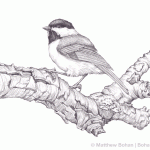
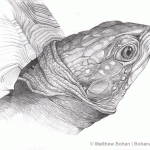
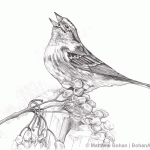

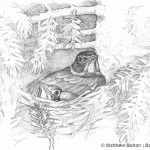
Leave a Reply